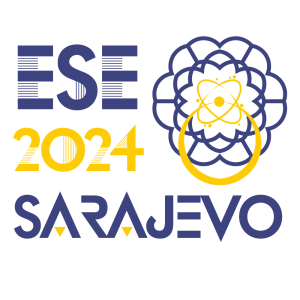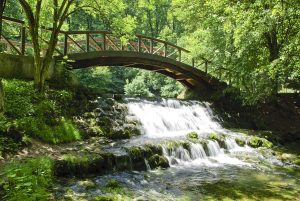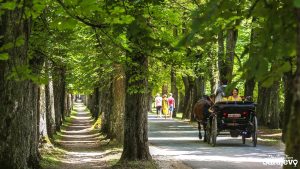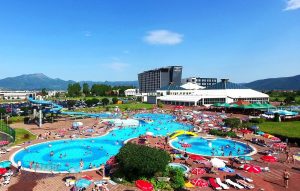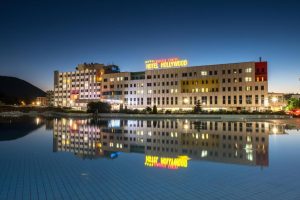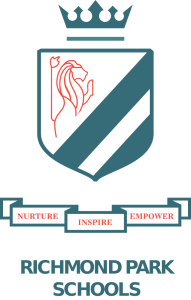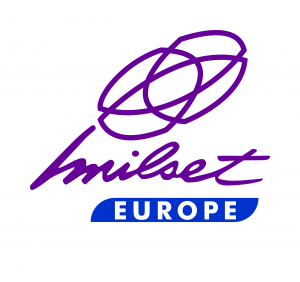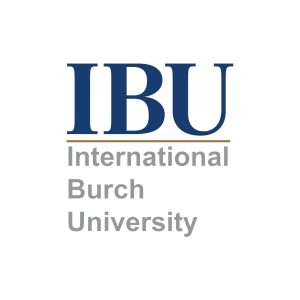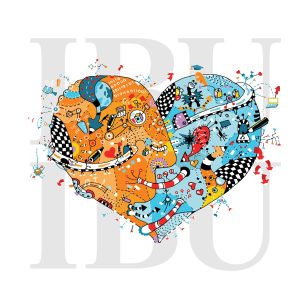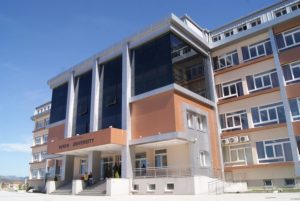MILSET Expo-Sciences Europe
The MILSET Expo-Sciences Europe (ESE) aims to promote scientific projects created by children and young people around the world through an exhibition in a multi-cultural environment, while allowing the participation of institutions willing to assist young people in their projects.
The programme of the ESE consists of a variety of activities: the exhibition of projects, cultural and scientific visits, leisure activities, workshops, animation and conferences.
Participation at ESE is an opportunity to:
- Provide a space to highlight the efforts and interests of youngsters, teachers and leaders in research, science and technology innovation, enhancing their motivation and contributing to their personal development.
- Establish relationships with other institutions with similar goals through the development of scientific, technical and social projects to exchange ideas and create actions according to the needs of today’s world, for the benefit of industry, the educational sector and society at large.
- Be represented at an international level through the young peoples’ projects, allowing for the spreading of knowledge amongst the main target audience (i.e. young people).
- Promote Scientific Culture in a multi-cultural environment, allowing the sharing of experience and good practice as well as achieving higher-standard scientific activities.
History of ESE
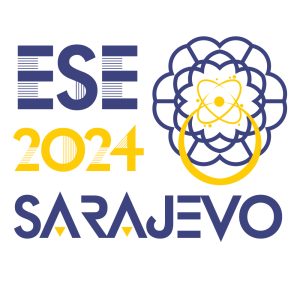 MILSET Expo-Sciences Europe 2024 (ESE 2024) MILSET Expo-Sciences Europe 2024 (ESE 2024)Dates: 15-21 July 2024 Organisers: MILSET Europe, Richmond Park Education Place: Sarajevo, Bosnia and Herzegovina Website: https://ese2024.milset.org |
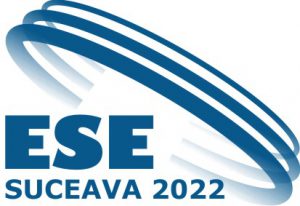 MILSET Expo-Sciences Europe 2022 (ESE 2022) MILSET Expo-Sciences Europe 2022 (ESE 2022)Dates: 24-30 July 2022 Organisers: MILSET Europe, MILSET Romania, Cygnus Place: Suceava, Romania Website: https://ese2022.milset.org |
 MILSET Expo-Sciences Europe 2018 (ESE 2018) MILSET Expo-Sciences Europe 2018 (ESE 2018)Dates: 16-22/07/2018 Organisers: MILSET Europe, FZT Place: Gdynia, Poland Website: https://ese2018.milset.org |
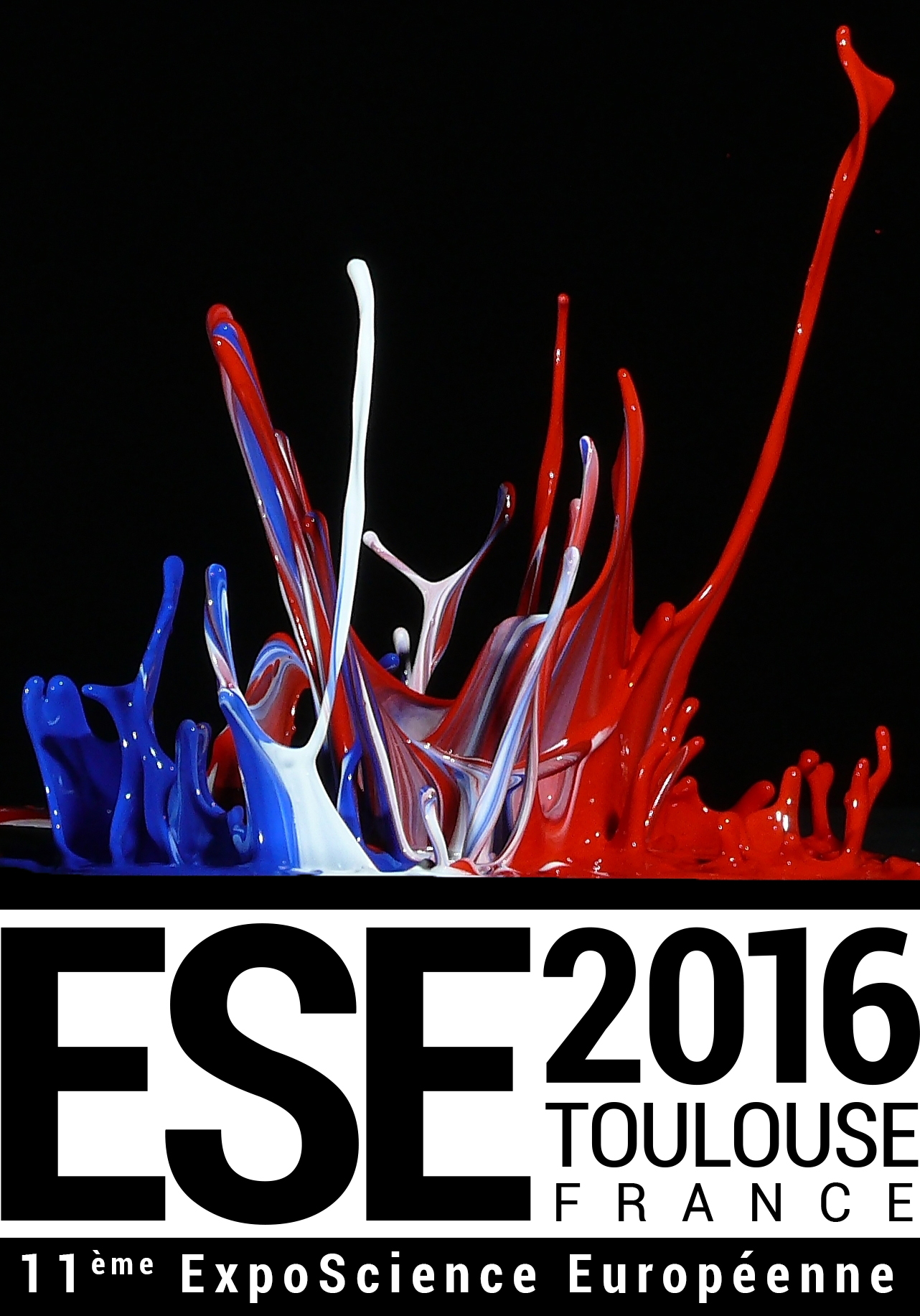 MILSET Expo-Sciences Europe 2016 (ESE 2016) MILSET Expo-Sciences Europe 2016 (ESE 2016)Dates: 09-15/07/2016 Organisers: MILSET Europe, CIRASTI Place: Toulouse, France |
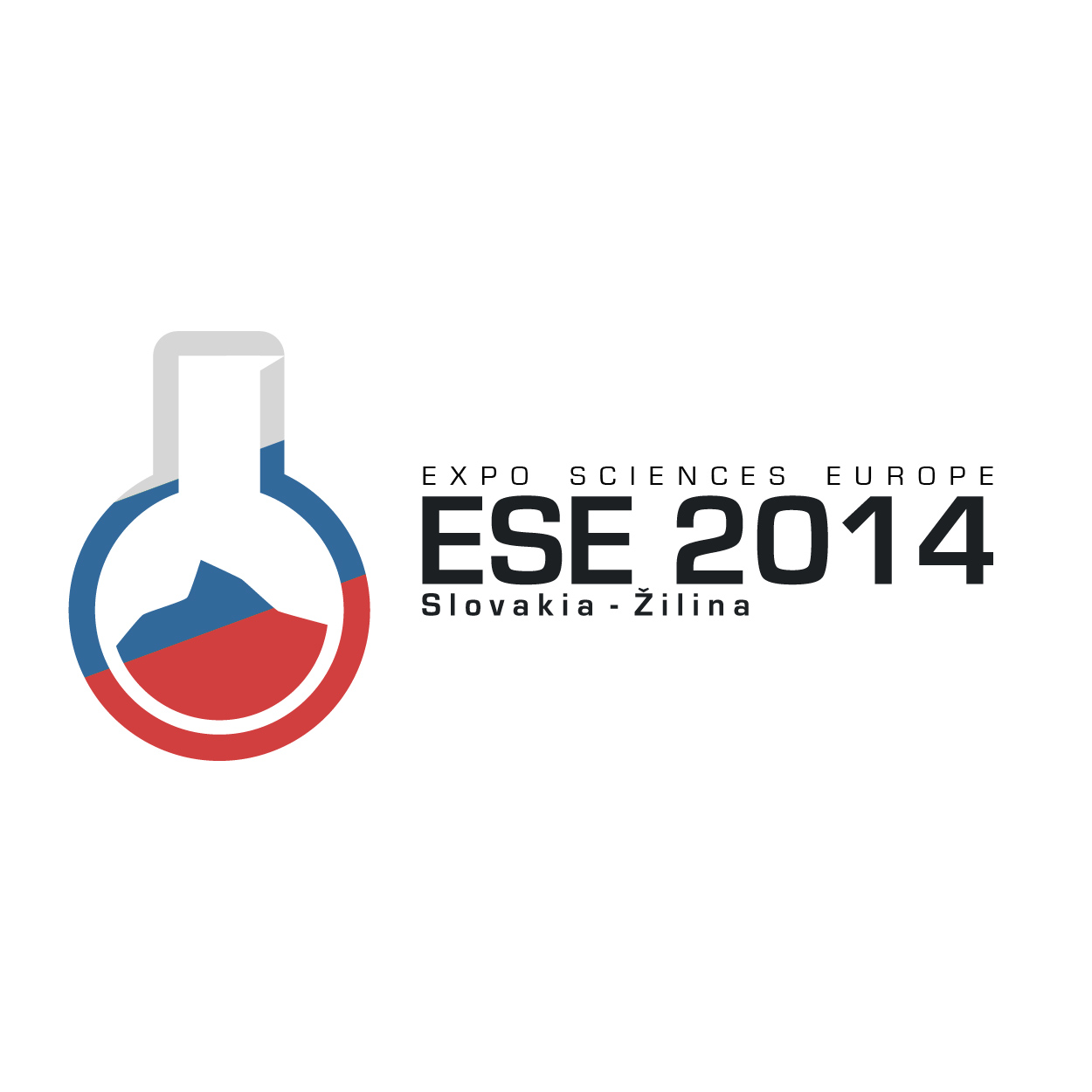 MILSET Expo-Sciences Europe 2014 (ESE 2014) MILSET Expo-Sciences Europe 2014 (ESE 2014)Dates: 09-12/09/2014 Organisers: MILSET Europe, AMAVET Place: Zilina, Slovakia Website: https://ese2014.milset.org |
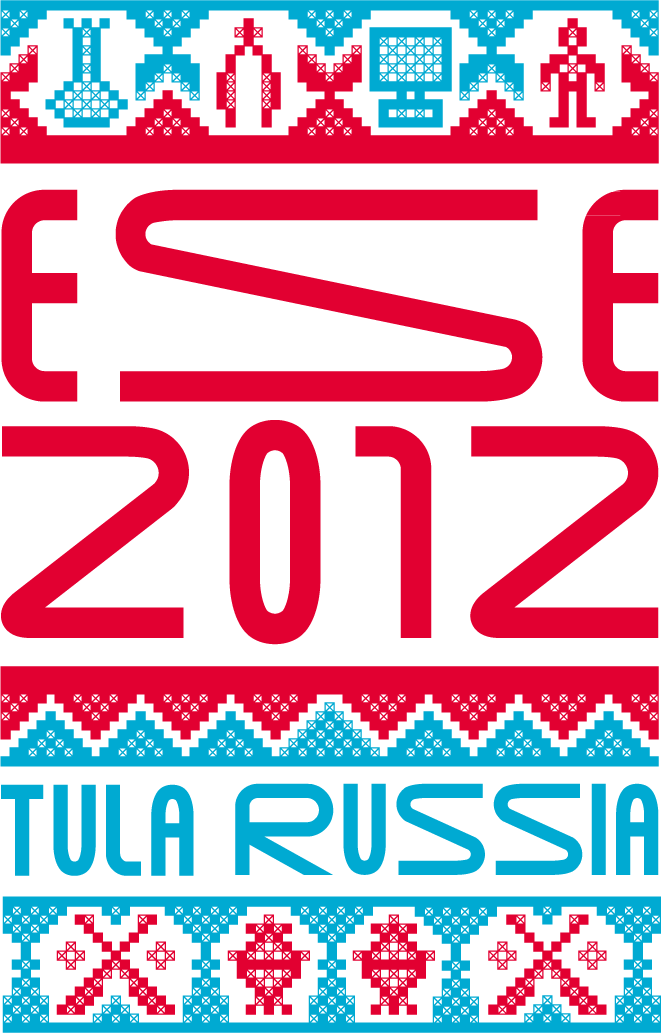 MILSET Expo-Sciences Europe 2012 (ESE 2012) MILSET Expo-Sciences Europe 2012 (ESE 2012)Dates: 02/07/2012 – 08/07/2012 Organisers: MILSET Europe, OODI, MGDD(U)T, BPHR Place: Tula, Russia Website: https://ese2012.milset.org |
 MILSET Expo-Sciences Europe 2010 (ESE 2010) MILSET Expo-Sciences Europe 2010 (ESE 2010)Dates: 27/06/2010 – 04/07/2010 Organisers: OODI, MILSET Europe Place: Moscow, Russia |
 MILSET Expo-Sciences Europe 2008 (ESE 2008) MILSET Expo-Sciences Europe 2008 (ESE 2008)Dates: 13/07/2008 – 20/07/2008 Organisers: MILSET Europe, TIT Kossuth Klub Place: Budapest, Hungary |
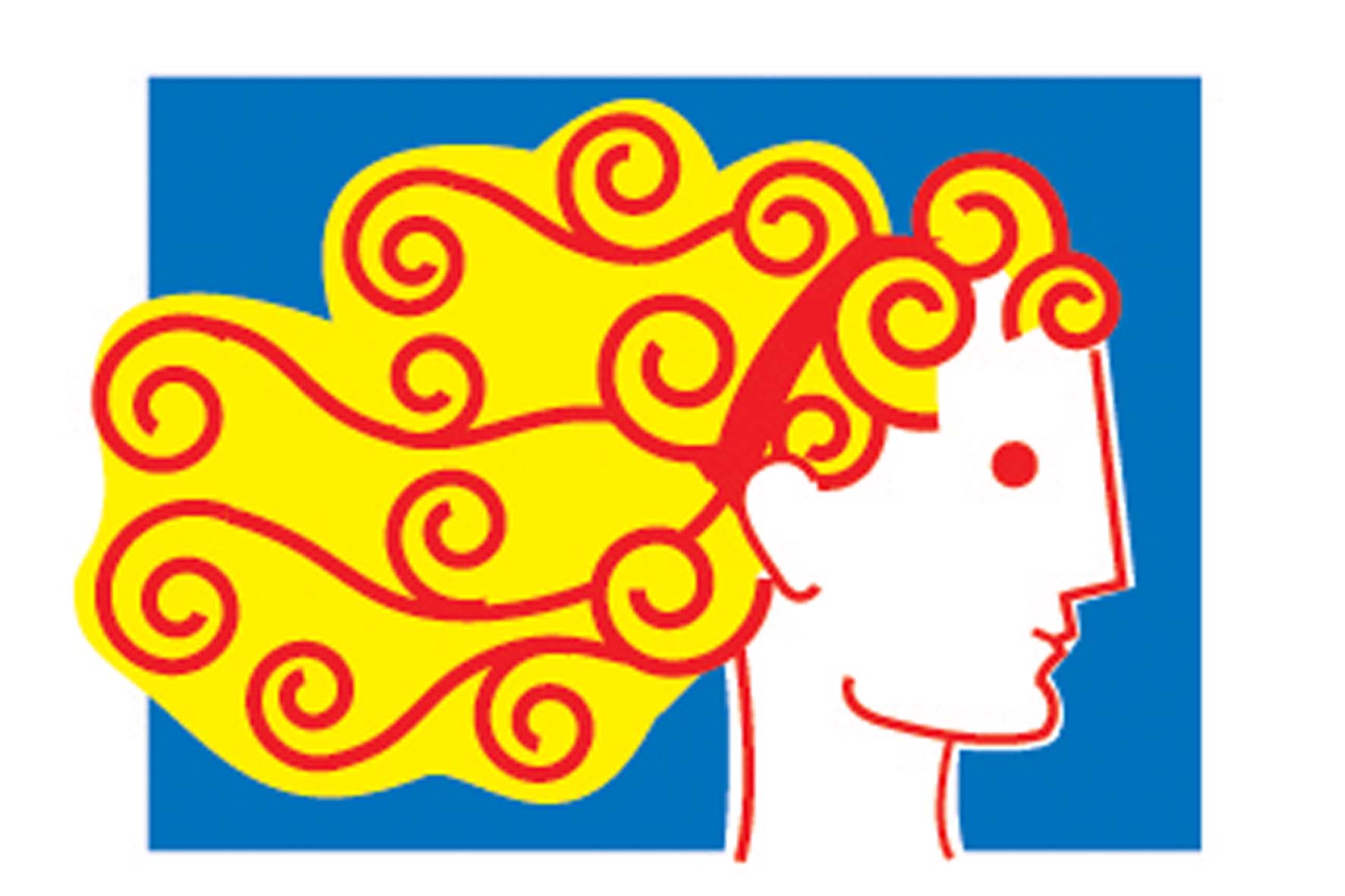 MILSET Expo-Sciences Europe 2006 (ESE 2006) MILSET Expo-Sciences Europe 2006 (ESE 2006)Dates: 16/07/2006 – 23/07/2006 Organisers: MILSET Europe, Magma Place: Tarragona, Spain Website: https://ese2006.milset.org |
 MILSET Expo-Sciences Europe 2004 (ESE 2004) MILSET Expo-Sciences Europe 2004 (ESE 2004)Dates: 08/07/2004 – 15/07/2004 Organisers: MILSET Europe, Landesverband Sachsischer Jugendbildungswerke e.V. (LJBW) Place: Dresden, Germany |
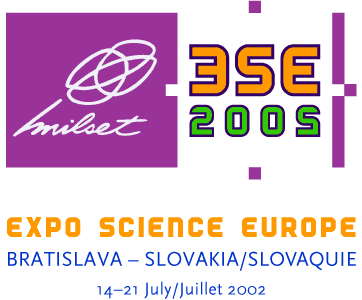 MILSET Expo-Sciences Europe 2002 (ESE 2002) MILSET Expo-Sciences Europe 2002 (ESE 2002)Dates: 14/07/2002 – 21/07/2002 Organisers: MILSET Europe, Asociacia pre mladez, vedu a techniku (AMAVET) Place: Bratislava, Slovakia |
 MILSET Expo-Sciences Europe 2000 (ESE 2000) MILSET Expo-Sciences Europe 2000 (ESE 2000)Dates: 16/07/2000 – 23/07/2000 Organisers: MILSET Europe, Jeunesses Scientifiques de Belgique (JSB) Place: Charleroi, Belgium |
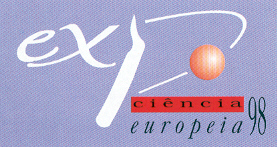 MILSET Expo-Sciences Europe 98 (ESE 98) MILSET Expo-Sciences Europe 98 (ESE 98)Dates: 17/08/1998 – 23/08/1998 Organisers: MILSET Europe, Associacco Juvenil de Ciencia (AJC) Place: Coimbra, Portugal |
 MILSET Expo-Sciences Europe 96 (ESE 96) MILSET Expo-Sciences Europe 96 (ESE 96)Dates: 15/07/1996 – 19/07/1996 Organisers: MILSET Europe, Asociace pro mladez, vedu a techniku (AMAVET) Place: Prague, Czech Republic |
Ilidža – Thermal Riviera Sarajevo
Ilidža (Cyrillic: Илиџа) is a town and a municipality located in Sarajevo Canton of the Federation of Bosnia and Herzegovina, an entity of Bosnia and Herzegovina. It has a total population of 66,730 with 63,528 in Ilidža itself, and is a chief suburb of Sarajevo and de facto its neighborhood.
Ilidža is one of the longest continuously inhabited regions in Bosnia and Herzegovina. Since the 19th century, numerous archeological finds have been made in the Butmir area, dating from Neolithic times. The so-called Butmir culture, is one of the best documented Neolithic cultures in Europe of the 26th and 25th centuries BC.
During Roman times, the Ilidža area was the location of the town known as Aquae Sulphurae. This was a Roman colony, and the largest settlement in the whole of Bosnia and Herzegovina at the time. Today numerous traces of Roman civilisation have been found, such as mosaics, ceramics, jewellery, coins, and even structural remains.
During the medieval period, the Ilidža area was part of the Bosnian province of Vrhbosna. Katera, one of the two original Bosnian towns mentioned by Constantine VII in De Administrando Imperio, was found on the ground of today’s Ilidža municipality. The disciples of Saints Cyril and Methodius considered the area important enough to stop at Vrelo Bosne (Spring of the Bosna River) and build a church in the area.
The modern town of Ilidža as we know it was founded during the Ottoman rule of Bosnia. Its name derives from the Turkish word Ilıca, meaning “warm thermal springs”. Ilidža, like the rest of Bosnia and Herzegovina, experienced industrialisation and westernization with the coming of Austria-Hungary. A railway station and tracks, hotels, and various other structures made Ilidža the most important town after Sarajevo in the region.
Nowadays, the largest thermal complex in this part of Europe has been developed at the hot springs of Ilidža. On an area of 15 hectares, the Ilidža Thermal Riviera offers its visitors a pleasant relaxation and an active vacation at the indoor and outdoor pools with numerous attractive water and recreation programs, as well as attractive accompanying facilities. In 2023, the municipality of Ilidža recorded the largest number of tourist visits and overnight stays in Bosnia and Herzegovina, and this record was not set for the first time!
Images from top to bottom show:
- Central park of Ilidža – developed during Austria-Hungary rule, where the Archduke Franz Ferdinand and his wife Sophie spent their last night before thier assasination that lead to the World War I
- Spring of river Bosna – the largest river fully in the territory of Bosnia and Herzegoivna, and the namesake of Bosnia
- Grand Alley at Ilidža – lined with giant chectnut and platanus trees, it is a beautiful path to walk, cycle or catch a unique fiacre carriage ride from the Central Park to the Spring of river Bosnia
- Ilidža Thermal Riviera with Hotel Hills in the background – the expo, opening and closing ceremonies will be held at the hotel (some pool time will be included in the program!)
- Hotel Hollywood – four-star hotel where the participants will stay and have their meals.
Sarajevo
Sarajevo (Cyrillic: Сарајево) is the capital and largest city of Bosnia and Herzegovina, with a population of 275,524 in its administrative limits. The Sarajevo metropolitan area including Sarajevo Canton, East Sarajevo and nearby municipalities is home to 555,210 inhabitants. Located within the greater Sarajevo valley of Bosnia, it is surrounded by the Dinaric Alps and situated along the Miljacka River in the heart of the Balkans, a region of Southern Europe.
Sarajevo is the political, financial, social and cultural center of Bosnia and Herzegovina and a prominent center of culture in the Balkans. It exerts region-wide influence in entertainment, media, fashion and the arts. Due to its long history of religious and cultural diversity, Sarajevo is sometimes called the “Jerusalem of Europe” or “Jerusalem of the Balkans”. It is one of a few major European cities to have a mosque, Catholic church, Eastern Orthodox church, and synagogue within the same neighborhood.
Although there is evidence of human settlement in the area since prehistoric times, the modern city arose in the 15th century as an Ottoman stronghold when the latter empire extended into Europe. Sarajevo has gained international renown several times throughout its history. In 1885, it was the first city in Europe and the second city in the world to have a full-time electric tram network running through the city, following San Francisco. In 1914, it was the site of the assassination of Archduke Franz Ferdinand by a local Young Bosnia activist Gavrilo Princip, a murder that sparked World War I. This resulted in the end of Austro-Hungarian rule in Bosnia and the creation of the multicultural Kingdom of Yugoslavia in the Balkan region.
Later, after World War II, the area was designated the capital of the communist Socialist Republic of Bosnia and Herzegovina within the Socialist Federal Republic of Yugoslavia, leading to rapid expansion of its population and businesses with investment in infrastructure and economic development.
In 1984, Sarajevo hosted the 1984 Winter Olympics, which marked a prosperous era for the city. However, after the start of the Yugoslav Wars, the city suffered the longest siege of a capital city in the history of modern warfare, for a total of 1,425 days, from April 1992 to February 1996, during the Bosnian War.
With continued post-war reconstruction in the aftermath, Sarajevo is the fastest growing city in Bosnia and Herzegovina. The travel guide series Lonely Planet ranked Sarajevo as the 43rd best city in the world. In December 2009, it recommended Sarajevo as one of the top ten cities to visit in 2010.
In 2011, Sarajevo was nominated as the 2014 European Capital of Culture. It was selected to host the European Youth Olympic Festival. In addition, in October 2019, Sarajevo was designated as a UNESCO Creative City for having placed culture at the center of its development strategies. It is also ranked as one of the world’s eighteen Cities of Film.
Baščaršija Old Town and Sebilj Fountain
Baščaršija (Cyrillic: Башчаршија) from Turkish “başçarşı” = “the main market”, was established in the 15th century by Isa-Bey Ishakovic, the founder of Sarajevo, and Ghazi Husrev-Bey who left an exquisite endowment as a legacy to the city.
In addition to these two benefactors, some other regents and wealthy merchants contributed with their donations. With rise of the Ottoman Empire, the city progresses as well. Thus, Bascarsija was finished by the end of the 16th century, and the city soon after witnessed its golden age. Along with Istanbul, Thessaloniki, Edirne and Athens, it became one of the 5 largest cities in the Balkans, the city of trading and wealthy and powerful community.
The square spread into several trading and craftsmen alleys, it comprised 45 markets and over 80 crafts. Tiny cobbled alleys intertwined and spread towards mosques, inns, bedestans, hamams, schools and tekkes, fountains, caravanserai…
The first water supply system was built in the mid 15th century, and significantly extended in the 16th century. By the end of the Ottoman period, there were 156 spouts and several stone fountains built mainly as an endowment.
Sebilj Fountain is a symbol of Sarajevo. A legend says: “Whoever drinks water from any of Sarajevo’s fountains and spouts will come to Sarajevo”. The Sebilj Fountain was built in 1753.
City Hall
Vijećnica (Cyrillic: Вијећница) was built as a new building for the city administration, as the need for such project came along with the Austro-Hungarian conquerors. The area of a medieval village (Brodac), where Isa-Bey’s Ishakovic established the city itself in the 15th was identified as ideal for the new government. The Austro-Hungarians bought off several buildings and two inns and designated Alexander Wittek as the main architect. He chose the pseudo-Moorish style for one of the most expensive projects in the Austro-Hungarian Empire at the time. Allegedly, Wittek was a perfectionist so he even projected the number of bricks that would be used to build the City Hall with a variation of only 3 bricks.
This grand architectural project was completed in 1896. Wittek did not live to see the completion. Due to his perfectionism, he could have not accepted the fact that the City Hall’s Auditorium did not have enough light. He considered this irreparable, had a nervous breakdown and committed suicide. Ciril M. Ivekovic took over the work, and found a simple solution and designed a glass-dome.
During the siege of Sarajevo, this cultural and historical monument was burnt down, along with the collections of the National and University Library (which was at the time seated within the City Hall). The City Hall renovation was completed in 2014, and it remains one of the most impressive attractions in Sarajevo. It is a symbol of education, hope, art, culture, history, beauty and perseverence.
European Jerusalem
For over four centuries, Sarajevo has been the city of multiculturalism. In one single city quatrer, one can step into a mosque, synagogue, Catholic or Orthodox church.
With the construction of the Sephardic Temple in the old town, along with the Old Orthodox Church and Ghazi Husrev-bey’s mosque a multicultural ambiance was created. This multicultural mosaic was enriched with the New Orthodox Cathedral built in the late Ottoman era, and the Catholic Cathedral built in early Austro Hungarian era.
Olympic Mountains
Olympism of 1984 is what made Sarajevo known all over the world. The Olympic Mountains Trebevic, Igman, Bjelasnica and Jahorina are only quarter to half-an-hour drive from Sarajevo. The mountains surround the valley of Sarajevo and are popular and developed winter tourism destinations and resorts, as well as a treat for all lovers of outdoor and offroad activities.
- Bjelašnica (Cyrillic: Бјелашница) and Igman (Cyrillic: Игман) mountains are very popular winter resorts located only 25 km from Sarajevo. These two mountains were the host of the 14th Winter Olympic Games in 1984, featuring Alpine and Nordic skiing and ski jumping competitions.
- Trebević (Cyrillic: Требевић) is the closest Olympic Mountain to the city. As such, Trebević has been one of the favorite local outdoor spots accessible by cable-car in only 12 minutes. During the Winter Olympics in 1984 it was the venue for the bob-sledge competition.
- Jahorina (Cyrillic: Јахорина) Olympic Resort is one of the most popular winter resorts. It is located 30 km east of Sarajevo. During the Olympics in 1984, it was venue of the slalom and grand-slalom competitions.
Bosnia and Herzegovina
The Heart-Shaped Land: Bosnia and Herzegovina
Bosnia and Herzegovina (often abbreviated as B&H or locally as BiH) lies in the heart of Southeast Europe. Due to the distinctive shape that resembles the heart , the country is dubbed the “heart-shaped land”. It is here that eastern and western civilizations met, sometimes clashed, but more often enriched and reinforced each other throughout its long and fascinating history. Here, the most interesting and attractive sites are a wonderful mix of this tiny country’s cultural and natural heritage.
Perhaps what is most important for the visitor to know today, though, is that Bosnia and Herzegovina is a stunningly beautiful country with a vast array of landscapes, cultures, traditions and people. And as the old cliche goes ‘people make the place’ – and B&H prides itself on its hospitality and treating our guests as if they were family members. And family we take to heart.
Facts about B&H
Location: Bosnia and Herzegovina lies in the Southeastern Europe, boardering the Adriatic Sea, Croatia, Serbia and Montenegro.
Climate: Continental Mediterranean climate
Area: 51,197 sq km
Population: 3,531,159 (2013 census)
Ethnic Groups: Bosniak 50.1%, Serb 30.8%, Croat 15.4%, other 2.7% (2013 census)
Religions: Muslim 50.7%, Orthodox 30.7%, Roman Catholic 15.2%, other 3.3% (2013 census)
Cities: Capital city of Bosnia and Herzegovina is Sarajevo. Other bigger cities are: Banja Luka, Bihać, Brčko, Mostar, Tuzla and Zenica.
Languages:
The official languages in Bosnia and Herzegovina are: Bosnian, Croatian and Serbian. Though, they are very similar and in the time of Yugoslavia they were acctually one language. By learning one of these languages, the other two are almost automatically learned too. However, while the languages are mutually intelligible, it is worth noting that there are some differences in the vocabulary, grammar and pronunciation.
Here is the text of the Article 1 of the Universal Declaration of Human Rights in Bosnian, Croatian and Serbian:
- Bosnian: Sva ljudska bića rađaju se slobodna i jednaka u dostojanstvu i pravima. Ona su obdarena razumom i sviješću i treba da jedno prema drugome postupaju u duhu bratstva.
- Croatian: Sva ljudska bića rađaju se slobodna i jednaka u dostojanstvu i pravima. Ona su obdarena razumom i sviješću i trebaju jedna prema drugima postupati u duhu bratstva.
- Serbian: Cвa људскa бићa рaђajу сe слoбoднa и jeднaкa у дoстojaнству и прaвимa. Oнa су oбдaрeнa рaзумoм и свeшћу и трeбa jeдни прeмa другимa дa пoступajу у духу брaтствa.
Alphabets: Latin and Cyrillic. Latin alphabet is used mostly in Bosnian and Croatian language and Cyrillic mostly in Serbian language.
Summary of the modern history
After the World War II, Bosnia and Herzegovina became one of the 6 republics that made up the Socialist Federal Republic of Yugoslavia, one of the largest, most developed and diverse countries in the Balkans. Paralel with the collapse of communism in Eastern Europe during the late 1980s and early 1990s, Yugoslavia experienced a period of political and economic crisis. Political leaders used nationalist rhetoric to erode a common Yugoslav identity and fuel fear and mistrust among different ethnic groups. In June 1991 Slovenia and Croatia have declared their independence and in March 1992 Bosnia and Herzegovina declared independence, too. This was followed by warfire first shortly in Slovenia, then in Croatia and lasted the longest in Bosnia and Herzegovina till the Dayton Peace Agreement which was signed in December, 14th 1995 by the presidents of Republic of Bosnia and Herzegovina, Croatia and Serbia.
For more information on the war in Bosnia and Herzegovina 1992-1995 and the conflicts in the territory of former Yugoslavia, please visit the website of the International Criminal Tribunal for the former Yugoslavia.
Read the Dayton Peace Accords and the Constitution of Bosnia and Herzegovina here: Office of the High Representative.
Watch the movie No Man’s Land (2001) directed by Danis Tanović and awarded with Oscar for best foreign language film in 2002.
In June 2008, Bosnia and Herzegovina signed the Stabilization and Association Agreement (SAA) with European Union. Bosnia and Herzegovina has been recognised by the EU as a “candidate country” for accession since the decision of the European Council in 2022 and is on the current agenda for future enlargement of the EU. Learn more about the Bosnian-Herzegovinian Road to the European Union here: Delegation of the European Union to Bosnia and Herzegovina.
Lifestyle
Approximately 50% (est. 2022) of the population lives in towns or cities. Families in the cities usually live in the apartments, though there are still a high number of private houses in the city centers and suburbs. Both in the suburbs and villages, there is still a great community atmosphere to be found.
Interesting fact: Removing the shoes before entering the house or the apartment is a regular practice in B&H, especially in Bosniak households.
Family is very important in the culture of B&H. Children are mostly staying at their parents’ house until they get married unless they move to another city for studies or work. It is not rare that the grandparents live with their children’s families and sometimes care for the young children while the parents are working. Both women and men usually work.
Families usually spend time together on weekends and have at least one meal a day together. The most frequent activities are visiting friends and cousins, going to picnics in the nature, going to the coast in the summer and in the mountains in the winter.
Cuisine in Bosnia and Herzegovina is a mixture of Western and Eastern influences. The food is closely related to Turkish, Middle Eastern and other Mediterranean cuisines, but due to years of Austro-Hungarian rule, there are also many culinary influences from Central Europe.
It combines delicious roasted meats, stewed vegetables, and bread in a bevy of combination. The most famous and popular traditional dishes are:
- ćevapi made from grilled minced meat served with somun – a special kind of bread and chopped onion,
- pita, a pie with different fillings such as meat (burek), cheese (sirnica), cheese and spinach (zeljanica), spicy potato (krompiruša) and pumpkin (tikvenica)
- dolma, different kinds of vegetables filled with mixture of minced meet, rice and spices,
- baklava, hurmašice, tulumbe, tufahija… desserts soaked in sugar syrup, part of the Ottoman heritage,
- janjetina, a whole lamb cooked on a spit by rotating over a coal fire for a long time. It can be found almost at any restaurant and on special occasions, some families make such roasts at home.
Slices of bread with cheese and marmalade or small sausages with scrambled eggs are to be found on the table for breakfast, and are usually served together with tea or white coffee. Typical lunch or dinner served in Bosnian families is consisted out of soup – mostly chicken or beef soup with noodles, salad – mostly made of tomato, cucumbers and onions, main dish – different versions of meet with rice, potato, pasta or vegetables.
Coffee drinking in Bosnia is a traditional daily custom and plays an important role in society, especially during social gatherings. Most popular kind of coffee is “Bosnian coffee”, sometime also called as Turkish coffee, though it is prepared slightly differently than its Turkish predecessor. Espresso, macchiato and cappuccino are also popular. Coffeehouses, where Bosnian coffee is served in džezva pot with rahat lokum and sugar cubes, proliferate Sarajevo and every city in the country. Coffee drinking is a favorite Bosnian pastime and part of the culture. Bosnia and Herzegovina is the ninth country in the entire world by per capita coffee consumption.
Richmond Park Schools
Richmond Park Schools are a leading private educational institution in Bosnia and Herzegovina that covers education and guidance from preschool to university for 25 years, owned by Stirling Education, a provider of first-class education across the globe with the corporate head office located in London, United Kingdom.
At Richmond Park Schools, we believe that students can reach their full potential only if they feel happy, safe and protected. Therefore, our schools function as an extended family and ensure that each child receives pastoral care, support and education. All of our schools share the common values of the Richmond Park Principles – Nurture, Inspire, Empower!
We are one of the few educational institutions in Bosnia and Herzegovina that offers a national and Cambrudge international curriculum, all taught in English. We provide our students with the opportunity to obtain internationally recognized English language certificates, issued by the British Council and Cambridge University. We pride ourselves on the quality of our educational process and want our students to successfully master English.
With over 1.500 students currently attending our 11 schools, we believe that Richmond Park Schools provides young people with the best start to a bright future.
Pastoral care
In addition to excellent educational attainment, our students enjoy a safe and nurturing environment where they are given excellent guidance and pastoral support. We encourage transparency, trust and mutual respect between students, teachers, and parents to create best-in-class environments for effective learning. Students are taught to be resilient and embrace new challenges.
Inspiration
Through our teaching and extra-curricular activities, we inspire our students to achieve beyond their expectations and enable them to create a broader range of opportunities. Curiosity makes learning more effective and enjoyable. Curious students not only ask questions but also actively seek out the answers. Hence, we develop our students’ curiosity through a variety of competitive and non-competitive programmes.
Personal development
We ensure our students are provided with the skills needed to adapt to a rapidly changing world. We develop independent, confident, respectful and resilient individuals with strong values and a true sense of community responsibility. With a multitude of extracurricular activities, competitions, and events, students are provided with an outstanding platform to develop their skills, such as our flagship programme – Bosnian Science Project Olympiad – BOSEPO!
BOSEPO
Bosnian Science Project Olympiad (BOSEPO) is a science project competition founded by Richmond Park Schools, celebrating its 15th annivesary this year! The programme was developed as a platform for youth in Bosnia and Herzegovina to showcase their scientific and creative capacity through projects which at the time (and by a large extent even today) are sadly not a part of mainstream education in the country.
Mission
The mission of BOSEPO is to inspire and empower the next generation of scientific and cultural leaders in Bosnia and Herzegovina. We are dedicated to fostering a culture of scientific curiosity, critical thinking, creativity and innovation among primary and secondary school students across the country and internationally. Through rigorous scientific competitions, educational programs, and mentorship opportunities, BOSEPO aims to nurture young minds and encourage their pursuit of excellence in the fields of STEAM (Science, Technology, Engineering, Art and Mathematics).
Vision
Our vision for the Bosnian Science Project Olympiad (BOSEPO) is to become the premier platform for nurturing scientific talent and promoting STEAM (Science, Technology, Engineering, Art and Mathematics) education in Bosnia and Herzegovina and internationally. We envision a future where every student in Bosnia and Herzegovina and worldwide has the opportunity to explore and excel in science, where innovation knows no boundaries, and where our country is recognized globally for its contributions to the advancement of knowledge and technology. BOSEPO is committed to creating a brighter future by fostering a deep love for science, encouraging collaboration, and inspiring students to reach their full potential as the scientists, innovators, artists, policy makers and, most importantly, global citizens who will promote and contribute to sustainable scientific, cultural and social progress throughout their lives.
MILSET Europe
MILSET Europe is a European non-governmental, non-profit and politically independent youth organisation, which aims at developing scientific culture among young people through the organisation of science-and-technology programmes, including science fairs, science camps, congresses and others activities of high quality.
Mission
MILSET supports its member organisations to engage youth in science, technology, engineering, mathematics and the arts (STEAM) through motivation, cooperation, collaboration, and networking.
Vision
Inspiring youth through science and technology initiatives.
Objectives
- to support European and international cooperation between regional and national associations, particularly in the form of exchanges of young people between MILSET Europe member and partner organisations;
- to encourage cooperation amongst young scientists on a European level, promoting the idea of a United Europe;
- to aid member organisations through the development and organisation of international seminars, training and conferences and by representing them on supranational and international bodies such as the European Commission;
- to stimulate the development and organise scientific and technical educational activities for young people and children such as Science Fairs, international meetings, youth congresses, summer camps, conferences, study trips, training courses and all activities helping to promote exchanges among youth of all countries, including young scientists;
- to motivate young people to get interested in science, and to help educators working in this field worldwide;
- to cooperate at global level within MILSET with organisations sharing the same objectives.
International Burch University
International Burch University (IBU) is the leading private university in Bosnia and Herzegovina, founded in 2008 and owned by Stirling Education, a provider of first-class education across the globe with the corporate head office located in London, United Kingdom. With Faculties in Engineering and Natural Sciences, Economics and Social Science, and Education and Humanities, International Burch University is highly respected and follows the ‘entrepreneurial university model’; that is, it encourages and supports innovation, recognises and creates opportunities, and promotes soft skills and an entrepreneurial mindset.
International Burch University emphasises academic achievement encouraging and inspiring its students to become the best that they can be. At the same time, International Burch University is looking beyond academic achievement and towards character development, nurturing and developing strong and resilient characters who can think independently, have a sense of creativity and who will embrace and welcome problem solving.
As an organisation, we are forward-thinking and recognise the need to adapt to an ever-changing technological world. Our curriculum has been adapted to contain a strong digital element, supported by excellent ICT teaching and the latest classroom technology. Our online and digital teaching offering has been pressure tested under the toughest of global pandemic conditions. We are extremely proud of what we have achieved and what we can achieve in the coming years.
Mission
The mission of International Burch University is to support education, scientific research, and training of highly qualified personnel to work in academic and professional areas through the development of contemporary curricula and creation of an environment to trigger creative, objective, and critical thinking and continuous learning. Through its public activities, joint projects, and collaboration with private and public sector institutions as well as with international institutions, the University aims to improve the community and contribute to addressing local and global challenges. An important aspect of all activities is a friendly academic environment that encourages each student to take a leading role in reaching their personal and intellectual potential.
Vision
Achieving excellence in Education, Research & Development, Innovation & Entrepreneurship through continuous mentoring, academic and life orientation.
